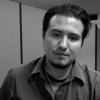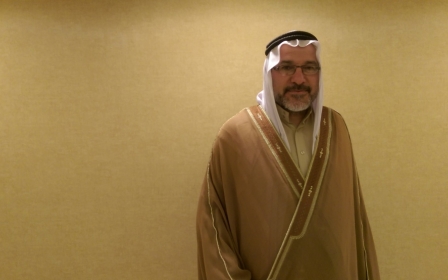Islamic State inc: Maximisation

The Haji Bakr findings released by Spiegel help give us more proof of Islamic State’s multi-divisional form of organisation, which is based on forms of corporate governance and structure. This structure allows for the production of managed violence and chaos.
Islamic State’s multi-divisional form of organisation allows it to maximise its ability to conduct operations, erode rival state institutions and power, and establish its own form of governance. It documents its operations by filming the battlefield terrain and meticulously documenting levels of success and control. This allows for operational efficiency to be maximised and the generation of organised chaos - management of savagery - which creates a void in government that IS eventually attempts to fill. The idea that the structure of IS takes on the form of corporate government is alluded to, but its significance is rarely explained.
My study intends to understand firstly, whether or not this model truly fits IS and find out why this design is important to the group’s operational nature. What is crucial in the structure of IS is not only that it’s wholly modern, but that it re-appropriates “Western” systems and ideologies to achieve its goals.
The model
“By placing each division on its own profit-making basis, I gave the general office a common measure of efficiency with which to judge the contribution of each division...through the concept of return of investment,” wrote Alfred P. Sloan
Sloan sought to re-organise General Motors after taking the reigns of the company and seeing its rapid expansion during and after World War I. In his words, “General motors needed to find a principle of coordination without losing the advantages of decentralisation.” In other words, find a decentralised system with centralised power and control. Sloan was able to gather information on what was needed by conducting a company-wide organisational study that measured each division’s efficiency and return of investment.
He concluded that despite having divisions generating much more capital than others, it was possible that those generating much less capital were actually performing at a higher rate of efficiency and maximising their operational potential. Through this format, Sloan was able to figure out which divisions needed expansion or which ones were in need of liquidation.
In examining IS attacks by studying second-party analysis and following events on the ground as they occur, one can understand how the group’s own organisational structure fits within the principles which governed Sloan’s organisation.
Sloan’s structure is rooted upon several principles:
- Facts and Data are the main and only determinant of decision making: IS divides its operations into several categories - assassination, armed attacks, bombings (mortar, grenade and rocket launchers), burning homes, freed prisoners, suicide vehicle IEDs, suicide vest attacks, vehicle borne IEDs, motorcycle suicide bombings etc. What is important to gather from this, is that while IS sought to erode the Iraqi and Syrian governments’ ability to govern, it did so by changing its modes of attack according to the level of governance and influence it had in a particular geographic area. Its organisational structure of giving decision making power to local emirs and gathering operational data allowed it to focus its attacks, not only by category, but by intensity and frequency - the later categories changing over time as levels of governance increased or decreased.
- The company should encourage dissent and differences of opinion: What is meant by this is not differences ideologically, though an argument could be made that those also exist. What IS has done through its division of labour in middle and upper management, is empower local emirs, cabinet members and operational leaders to make decisions about the battlefield as they occur. A recently released video by the group on its attack on Baiji horrified international media for its depiction of children shooting artillery pieces. What was interesting, is the footage of the use of multiple cameras (including drones) surveying and capturing live the events on the battlefield. This indicates a level of operational sophistication much higher than previously thought. What is indicated is a high level of multi layered organisational structure that is sophisticated and adaptive.
- Organise a decentralised system of centralised power and control: As mentioned above, IS divides its governing territories by provinces, over which it appoints emirs as governors. This is a governing structure that is separate from Caliph Ibrahim’s cabinet of ministers and its military division. Data is most likely collected by local, on the ground emirs and analysed by those at the top, who make policy decisions according to the data.
- Staff with the most competent people without thought to friendship (nepotism): From what we can gather about the Islamic State, the CEO at the top is Baghdadi and he is the foremost authority. Emphasis is on the legitimacy of his religious office, but his other family members of which there are several religious scholars, appear to not have any operational role in the organisation. These positions are reserved for the most competent, experienced and knowledgeable members. It has been quite apparent that many of these leaders have their roots in Saddam Hussein’s Ba’ath security and military forces.
- The CEO or President is the absolute ruler: The Caliph rules as the ultimate source of religious and governing authority. As Sloan stated: “the CEO must operate like a dictator”.
- Offer customer choice: Ideologically and theologically, IS does not allow for dissenting opinions, but according to researchers at the International Centre for the Study of Radicalisation and Political Violence, the organisation allows almost anyone to join the project of state building. Entire families, the young, the old and even people’s pets have travelled to Syria to join the Islamic State’s project. It offers opportunities and recruits more than just fighters, but doctors, teachers, engineers and home-makers.
- Create a positive corporate image: According to a study by ICSR at King’s College, there is an army of “disseminators” that operate as apologists for IS on social media outlets. They answer questions in an articulate, intelligent and snarky manner when challenged by detractors and potential recruits.
- Expand Internationally: A recent phenomenon that we have observed since June of 2014 is the annexation and brand extension of IS into Libya, Nigeria, Sinai Peninsula, Yemen and even in the Afghan-Pakistan region. Along with these annexations, the adoption of similar strategy and tactics by these new groups has been a significant development.
- Find business beyond the corporation’s core product and service. The use of non-military operations in the sale of raw materials like oil and agricultural produce, taxation, extortion and theft, has made IS the richest terrorist organisation in the world. IS is plugged into grey markets of arms and raw materials. This inflow of capital makes its attempts at state building and governance a very real possibility, barring the continued military pressure from adversaries.
The Haji Bakr findings released by SPIEGEL help give us more proof of what we could only gather from observing and studying IS’s operational documents. The silent and stealth infiltration of rival organisations and geographic spaces, the targeting of security officials and conversion of “apostates” seems to have been in the blueprints of IS’s plan all along. In my study I focus mostly on Iraq, but what these documents give us is a look into how these same strategies were implemented in Syria and concocted much earlier than the infamous “Breaking the Walls Down” operations of 2012.
- Abe Jimenez is a researcher for the Southwest Initiative for the Study of Middle Eastern Conflicts whose research focuses on the organisation and structure of the Islamic State, as well as investigating forces that lead to radicalisation. He also has interests on issues of war trauma and its cultural and social effects. Twitter: @A_Ximenez
The views expressed in this article belong to the author and do not necessarily reflect the editorial policy of Middle East Eye.
Photo: A general view taken on 5 April shows a defaced Islamic State group flag in front of the main gate of palace of former Iraqi dictator Saddam Hussein in Tikrit (AFP)
Middle East Eye propose une couverture et une analyse indépendantes et incomparables du Moyen-Orient, de l’Afrique du Nord et d’autres régions du monde. Pour en savoir plus sur la reprise de ce contenu et les frais qui s’appliquent, veuillez remplir ce formulaire [en anglais]. Pour en savoir plus sur MEE, cliquez ici [en anglais].





